According to slashgear, before the space race officially began, experts were already making plans for an orbiting space station where people can live and work** As the Soviet Union and the United States competed to complete the manned lunar landing program, these goals were initially placed in a secondary position.
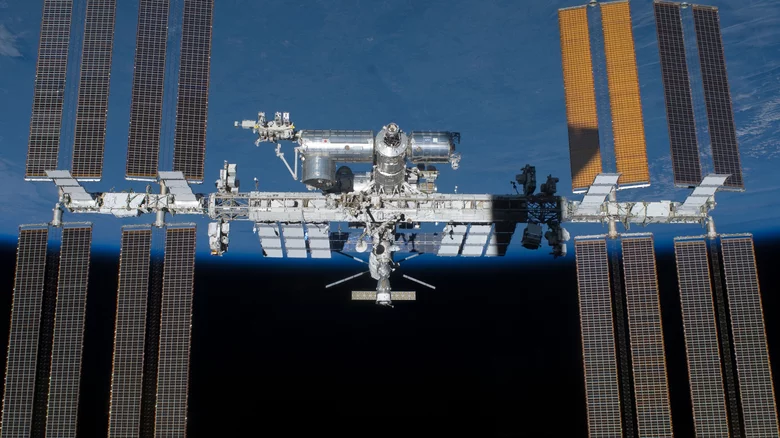
Once mankind completes the moon landing plan, the focus will shift to establishing a more permanent human existence in space. The first suitable space station, Salyut 1, was built by the Soviet Union in 1971. Over the next 15 years, more space stations were launched in the rest of the Salyut program.
In 1986, the Soviet Union launched the Mir space station, which is different from the previous relatively simple space station. It is modular and allows to increase over time. The space station laid the foundation for what became the most impressive construction project in human history.
Since 1998, the Soviet Union and the United States have started a joint project to build a huge orbital laboratory in low earth orbit. With the addition of the first two modules, Zarya and unity, the international space station was born. Its establishment has enabled mankind to continue to exist in space for more than 20 years, and provided an action base for microgravity experiments and the study of the impact of space flight on human body. The international space station is laying the groundwork for future long-term missions to Mars and elsewhere.
Rapid operation of the International Space Station
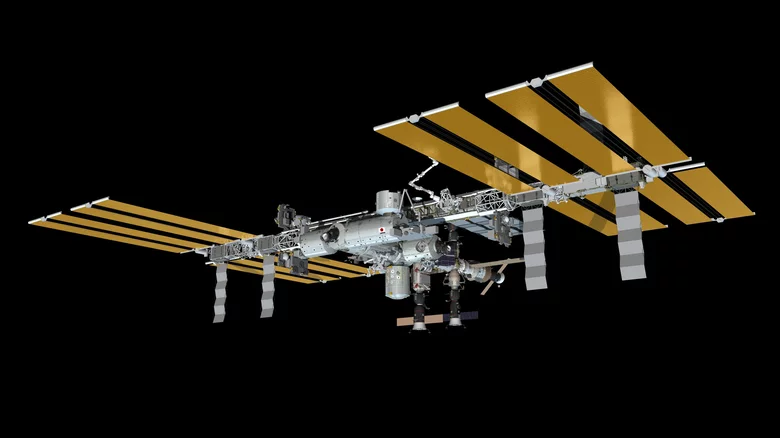
The international space station is not the fastest thing humans have ever built - the honor belongs to the Parker solar probe, which travels around the sun and Venus at 430000 miles per hour. Nevertheless, the international space station is still operating at an amazing speed.
The International Space Station orbits the earth at about 17500 miles an hour. At this speed, astronauts on the space station circle the earth every 90 minutes and experience 16 sunrise and sunset every 24 hours. Although astronauts and astronauts may not feel it when working on the space station, this means that they travel five miles of space terrain every second. This is about 23 times the speed of sound.
As a background, the distance from the earth to the moon is about 238900 miles. In 1969, it took Apollo 11 astronauts about three days to get there, but at the speed of the space station, it could reach the moon and return to earth in one day.
Relativity tells us that the faster we move, the slower we experience. In our ordinary life, our travel speed does not substantially change our subjective experience of time, but when you move very fast, the situation is different. When we approach the speed of light, if we can figure out a way, the change of subjective time will make a real difference.
Despite its speed, the international space station is still relatively slow compared with the amazing speed of 186000 miles per second. Nevertheless, the ISS is moving fast enough to measure the impact of time expansion on its residents.
People on the space station experience time more slowly
Relativity tells us that the faster we move, the slower we experience. In ordinary human life, our travel speed does not substantially change our subjective experience of time, but when you move very fast, the situation is different. Despite its speed, the international space station is still relatively slow compared with the amazing speed of 186000 miles per second. Nevertheless, the ISS is moving fast enough to measure the impact of time expansion on its residents.
An astronaut who lives on the space station for a year will experience about a hundredth of a second less than our people on the earth's surface. This is not much, but it still means that people on the space station are traveling very slowly into the future compared with the rest of us.
The international space station was built by five space agencies and a total of 15 countries

Space exploration often feels like a competition between countries, but the International Space Station challenges this attitude. By definition, space is a borderless field. It represents an opportunity for global society to work together, not confrontation.
When the space station was first built, the United States and Russia were the only two partner countries, but in recent years, more countries and organizations have joined the ranks. Today, the international space station has been built and manned by NASA, the Russian space agency, the Canadian Space Agency (CSA), the Japan Aerospace Exploration Agency (JAXA) and the 11 nation European Space Agency (ESA).
The crew space of the international space station is allocated according to the relative contribution of each country or organization to the whole. To date, the space station has staff and visitors from 18 countries, including each member state and some other countries. The space station is a continuing symbol of what is possible when humans work together without borders and across political ideologies.
The legal status of the space station is complex
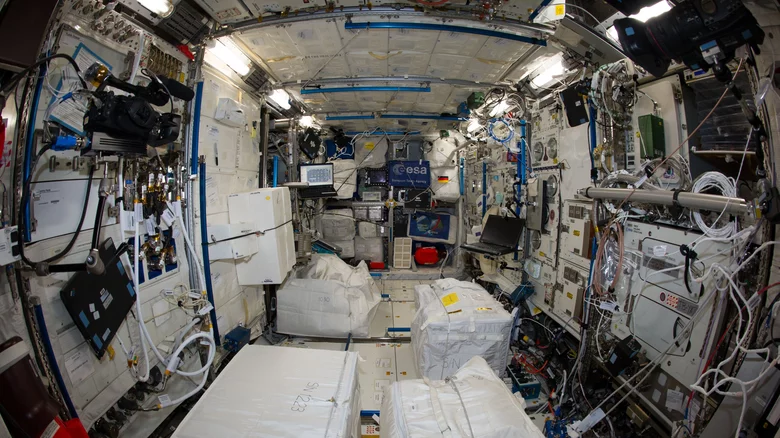
It can be said that the law governing the international space station is the intergovernmental agreement on the international space station (IGA) signed in January 1998. Because the space station is jointly owned and operated by different government entities, the legal issues on the space station have become a little crazy.
The agreement provides for the ownership and jurisdiction of the components of the space station. In the simplest terms, member states can extend their legal jurisdiction to the parts of the space station (modules or equipment) they provide and the astronauts they send.
This means that astronauts may be subject to the laws of the United States in one compartment and Japan, Russia, Canada or Europe in another. This may lead to tangled expectations on the space station, but things are simplified by the exemption of responsibilities between the parties. The agreement basically stipulates that no member state will require other partners to be responsible for accidents or damage caused by normal space station activities. In addition, any claims arising will be dealt with in accordance with the agreement between the partner countries.
Fortunately, space travelers tend to avoid crime when they leave the earth. When a crime occurs, such as an astronaut accused of illegally entering his partner's bank account from the space station in 2019, the IgA provides a framework for how to deal with it.
The space station has received more than 250 astronauts
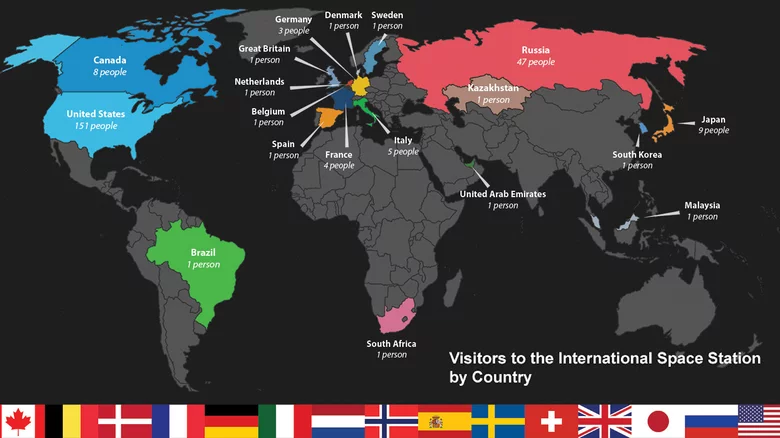
At any time, there are usually seven astronauts on the international space station. Sometimes, especially during crew replacement, up to 13 crew members may be temporarily in the space station, but these times are very few and very short.
Because the space station has been inhabited for more than 20 years, there are a lot of people coming and going. As of February 2022, 251 people from 19 countries have visited the station. As mentioned earlier, the allocation of staff is mainly based on a country's contribution to the space station. Therefore, most of the space station's staff, 155 astronauts, are from the United States.
There are also 52 Russian astronauts, 11 Japanese astronauts, 8 astronauts from Canada, including Chris Hadfield, who directs the space station, and 5 or fewer from different members of the European space agency or visiting countries. At present, the record of the most visits to the space station is jointly maintained by Yuri Malenchenko and Fyodor yuchkin, both of whom have visited the international space station five times.
The international space station has a robot crew
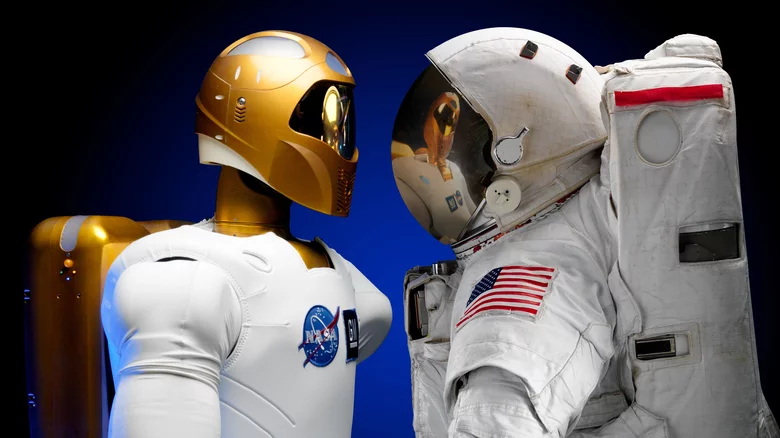
If the international space station does not have a robot member, it is not a suitable spacecraft. In order to realize people's fantasy of robot space partners, such as Lieutenant Colonel data and the robot simply named in "lost space", scientists at NASA Johnson Space Center (JSC) made Robonaut 2 as the first synthetic member of the space station staff.
Robonaut 2, commonly known as R2, brings the feeling of Luke Skywalker - who has lived on the international space station since 2012. R2 has vision system, sensors and hands, and its dexterity is almost the same as that of human beings. The robot can complete repetitive or dangerous tasks on behalf of the crew, free them up to do key work, or prevent them from potential injury.
However, Robonaut 2 is mainly used in the station as a test platform for robot activities in future long-term space missions. Astronauts' understanding of Robonaut's capabilities may lead to more advanced robots to assist astronauts on Mars missions.
Including solar arrays, the space station is about the size of a football field
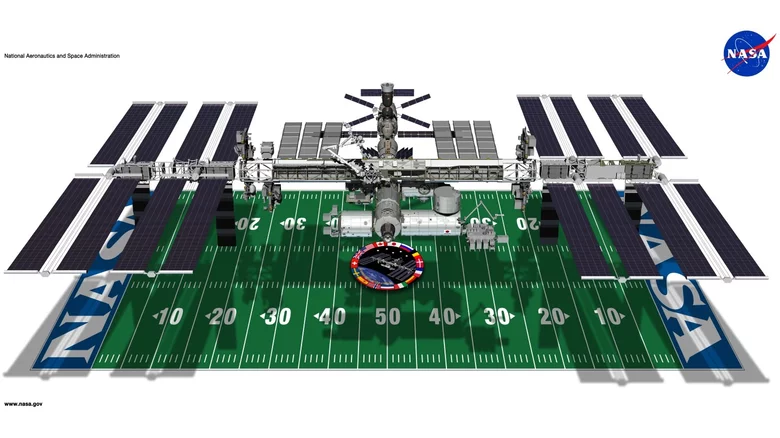
The international space station has become the largest spacecraft in history with considerable advantages. If we put it on the ground, the international space station will extend from side to side to the whole football field.
With a length of 357 feet and a weight of nearly 1 million pounds, the space station provides enough space for staff to complete their goals. With the expansion of its beam module, the international space station has a huge internal space with a size of 32898 cubic feet - although most of it is used to store equipment. Nevertheless, there are still a large number of facilities for astronauts to enjoy. The space station has a sleeping area, bathroom and gym. Astronauts use it for two hours a day to avoid bone and muscle loss. However, its best feature is the cupola, which allows astronauts to look at the earth from the window.
Although it is large, the space station may soon become larger. There are plans to add three modules to the space station in the coming years.
It allowed astronauts to live in space for nearly two years
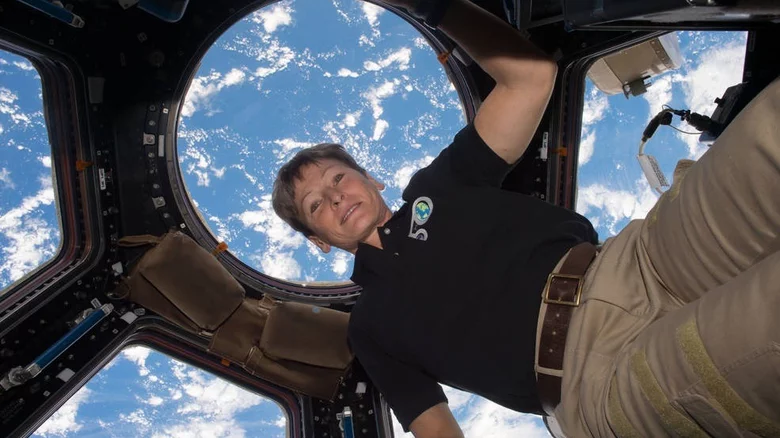
One of the main objectives of the international space station is to understand the impact of long-term stay in space on the human body, because this knowledge is the key to people's ability to travel to more distant places such as Mars. For this reason, it is not uncommon for people to live on the space station for a few months.
However, when it comes to American astronauts, no one stays in space longer than Peggy Whitson. In her career, she spent 665 days, 22 hours and 22 minutes outside the earth, just a few months to two years.
Whitson retired from NASA in 2018, which may have ended her time in space. However, she plans to return to the international space station in SpaceX's manned dragon spacecraft and serve as the commander of axiom Mission 2. This will be her fourth flight.
Other notable long-term missions include NASA's twin study, during which Scott Kelly spent a year on the international space station, while his brother Mark, himself an astronaut, stayed on earth. The study attempts to determine the impact of a year in space on the human body by using identical twins as controls.
It took 10 years and dozens of tasks to complete
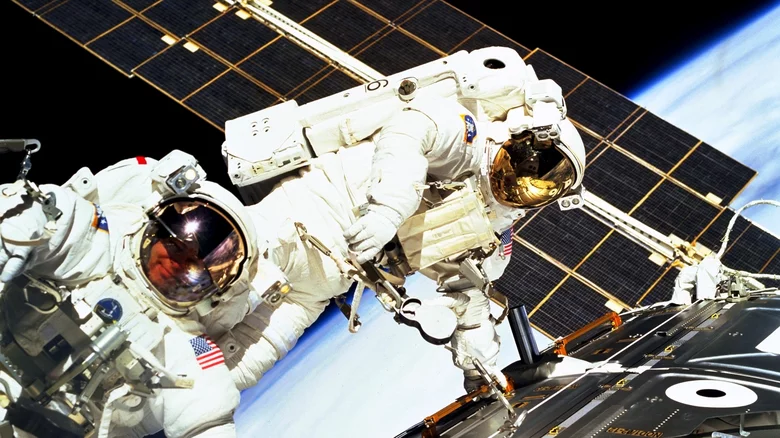
Former US President Reagan signed the plan to build the international space station in January 1984, with the goal of starting in the next 10 years. Although this schedule was not realized in the end, the space station was finally completed.
The first part, the "dawn" function, was launched by the Russian space agency in November 1998. Only two weeks later, NASA's unity node module was launched into orbit. Over the next decade, other modules and supplies were delivered before the space station was completed.
A total of more than 30 missions are required to transport modules, complete maintenance, and store materials for the space station. Many of these tasks are accomplished by various space shuttles - in fact, that's why the space shuttle program has lasted so long.
The construction of the space station was completed in 2009, when it became fully operational.
Astronauts have to drink recycled urine

When you are in space, you must bring everything you need. This means that astronauts need to regularly transport food and water in addition to scientific instruments, experiments and other necessities.
Launching materials into the space station is very expensive, sometimes costing tens of thousands or hundreds of thousands of dollars per kilogram of mass. Therefore, NASA and other space agencies try their best to limit the weight of the payload and ultimately reduce fuel costs.
An effective way to do this is to reduce the amount of water that needs to be transported to the space station. The international space station achieves this goal by using a water recovery system, which absorbs human and experimental animal urine and condensed water in the air and recovers it into drinkable water.
This may not sound pleasant, but it is essentially the same as what happens on earth, but on a smaller scale. So far, the water recovery rate of the space station is about 93.5%, but the goal of scientists is 98%. Reaching this milestone will help pave the way for future missions to Mars, where resupply will be more difficult or even impossible. As part of this effort, a new recycling system component will be sent to the international space station in 2021.
Astronauts on ISS can't see you, but you can see ISS

Astronauts on the space station can see many things through the cupola, including large features that are clearly visible. However, it is impossible to see a single person from an altitude of about 250 miles. It's much easier to see the space station with the naked eye.
As long as the sun doesn't come out, it's likely that you can see the international space station in the sky. The appearance of the space station is mainly its solar panel array. When it runs around the sky, it reflects a considerable part of the sun.
In fact, the space station is so bright that it is the third most obvious thing in the night sky, second only to the moon and Venus. In addition, the orbital path of the international space station covers about 90% of the population centers on earth, which means that no matter where you live, you have a great chance to see it as long as you know when and where.
NASA's spot the station service, as well as other websites and applications, track the movement of the space station in the sky and even alert you when it appears in your area. Then, as long as the sky is clear, all you have to do is look up.
It is constantly threatened by thousands of space junk
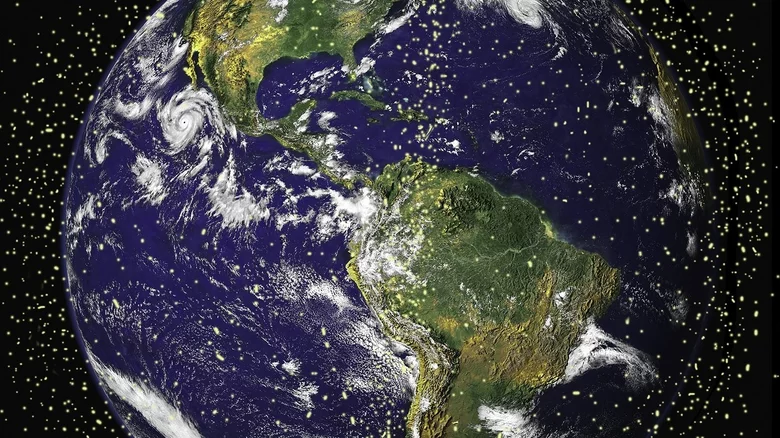
According to space, in the more than 20 years of operation of the space station, about 30 times are in danger of being hit by space debris, and the risk of impact is increasing. Three of these 30 incidents occurred in 2020.
By 2021, 23000 pieces of space junk were tracked by the U.S. Department of defense, each about four inches or more. These are just the pieces we know. As space junk roars through space, it may rupture, making it more difficult to track.
NASA estimates that there are 500000 pieces of debris the size of marble, and all of them cruise at roughly the same speed as the space station. Even small objects moving so fast can damage spacecraft, which is objectively very bad when you rely on spacecraft to sustain your life.
In most cases, tracking is effective, and the international space station has been able to avoid major collisions. However, in 2021, something inevitable happened. A small piece of debris hit Canada arm2, a robotic arm located outside the space station. Although the robot arm is still running, the impact did punch a hole in it like a bullet. Space agencies are studying potential solutions, such as the elsa-d satellite, to clean up the chaos caused by space debris.
The international space station will remain operational until at least 2030, and it may have a "neighbor"
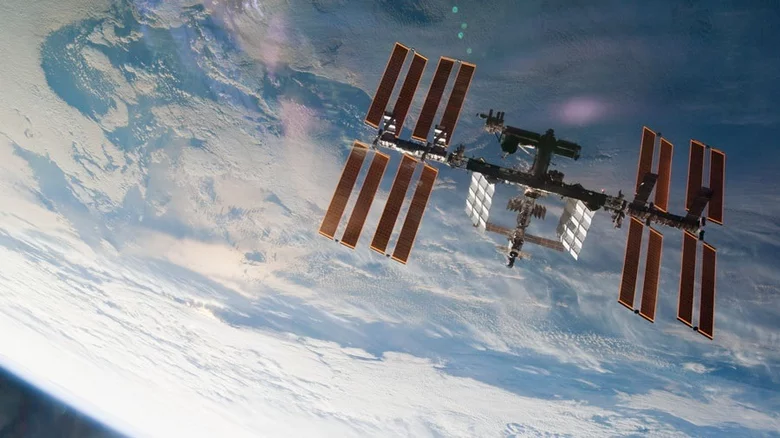
On January 31, 2022, NASA confirmed that the activities of the international space station had been extended to 2030. After that, the future of the space station is unclear. The Russian space agency has said that due to the aging technology, it has now exceeded its original mission design, and it hopes to withdraw from the station. This could happen as early as 2025.
Even if the Russian space agency does leave the international space station, they will not completely quit the space station game. A new space station called the Russian orbital service station (Ross) is planned.
In addition, NASA is working with business partners to build more space stations in low earth orbit, some of which may become the famous space hotels we have been looking forward to. No matter what happens, the legacy of the international space station is guaranteed, and the future of space exploration in orbit and abroad is bright.